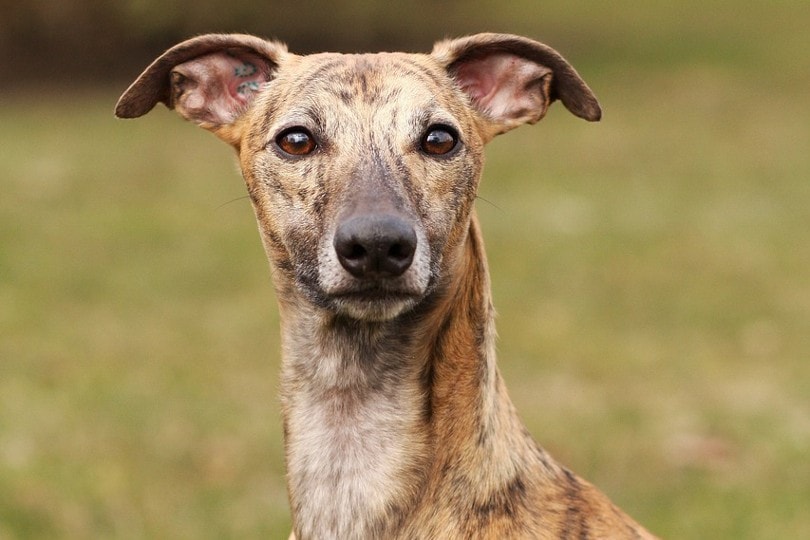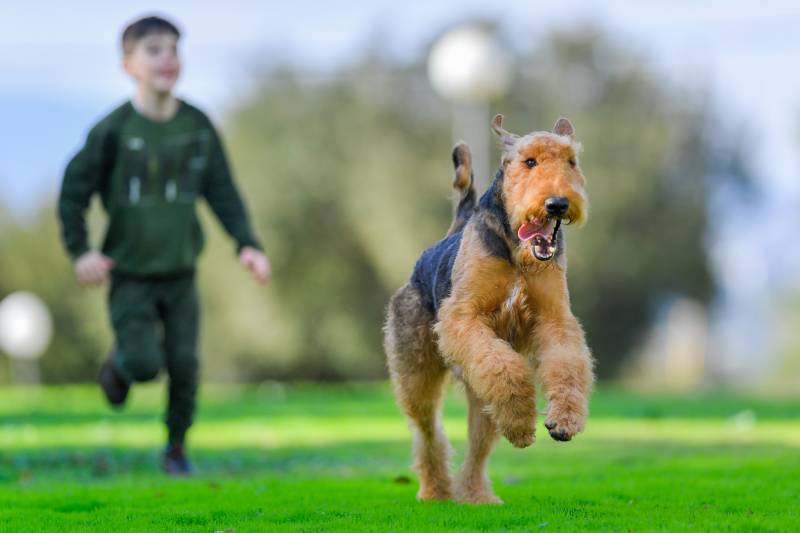What Were Dalmatians Bred For? History & Origins Explained
By Oliver Jones
Updated on
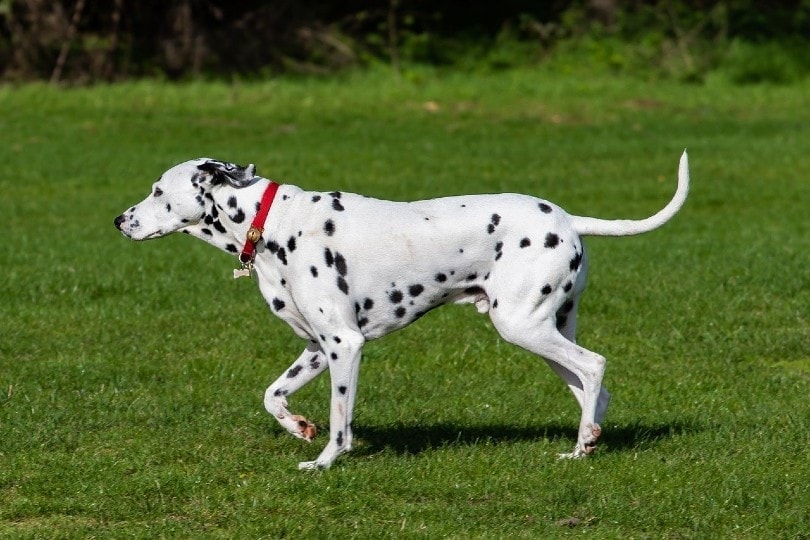
Click to Skip Ahead
Goofy and often gallant, the Dalmatian is an easily recognized breed no matter where you are in the world. These dogs have been around for centuries, they were well-known carriage dogs and have evolved to be hunters, draft animals, and even shepherds. They had a sudden rise in popularity after Disney’s “101 Dalmatians” came out in 1961. However, the Dalmatian’s true origins are widely debated. Even their name has mysterious origins and might not actually be due to their presence in Dalmatia, Croatia, as is commonly believed.
The History of the Dalmatian
While a few things about the Dalmatian’s history are certain, more than a few of the stories surrounding the breed aren’t. Despite all the speculation about these dogs, it’s interesting to see how widespread these dogs are and how far back their past goes.
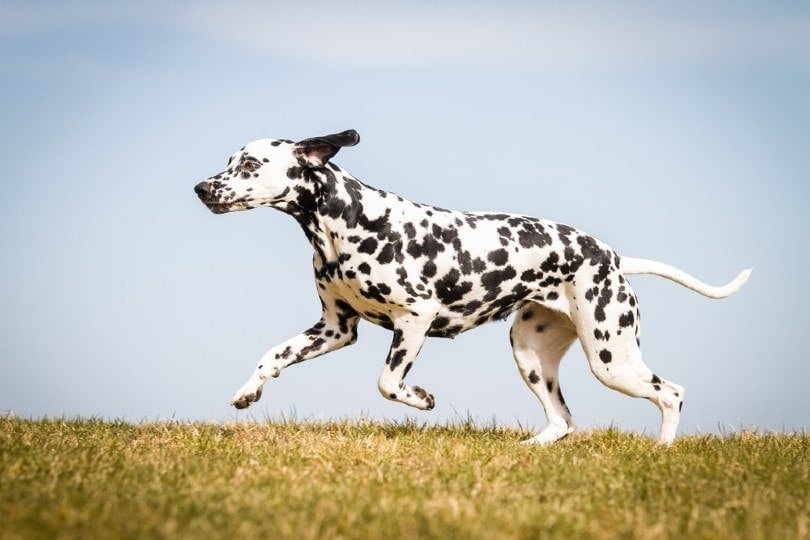
Early History
Dalmatians might not have a specific year when they were introduced, but distinctively spotted dogs have been depicted in paintings throughout the world for millennia.
3700 B.C.
It was said that King Cheops of Egypt, the builder of the Great Pyramid, owned a Dalmatian—or at least, a similar spotted dog. This one might be hearsay, especially since there aren’t many pictures to prove it, but it further goes to show how uncertain the history of the Dalmatian is.
2000–1000 B.C.
The first paintings starring spotted dogs were Greek frescos. About 2,000 years after the rumors of King Cheops’ ownership of a Dalmatian, the Greeks painted similar dogs chasing a boar. They paid particular attention to depicting the dog’s spotted coats.
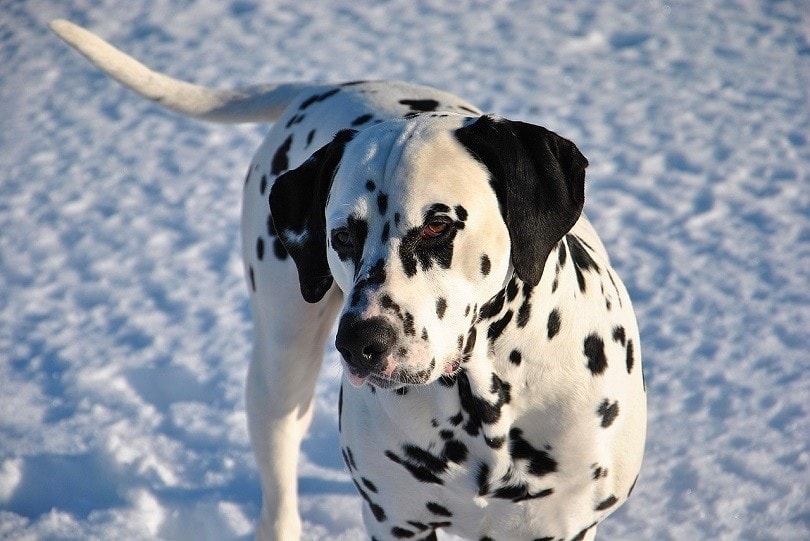
400 B.C.
If we’re looking for dogs matching the traits that we know and love in the Dalmatian breed today rather than their likeness, we need to turn our attention to breeding records. In 400 B.C., a Cretan Hound and a Bahakaa Dog were bred together, and their offspring showed many of the same traits that modern Dalmatians do, including their ability to hunt and their natural companionship with horses.
16–17th centuries
When the Dalmatian was first introduced to England, their fierce loyalty to horses, athleticism, and intelligence made them excellent carriage dogs. With horse-drawn carriages being the method of travel for many upstanding citizens — and many highwaymen lying in wait along the road — Dalmatians were keen-eyed watchdogs both for the horses and the passengers.
It’s the Dalmatian’s history as carriage dogs that shows why the breed has so much versatility today. Their endurance enabled them to keep up with the horses with ease, while their natural guarding instincts made them excellent companions for the road. The presence of a trusty Dalmatian was often a deterrent to sly highwaymen.
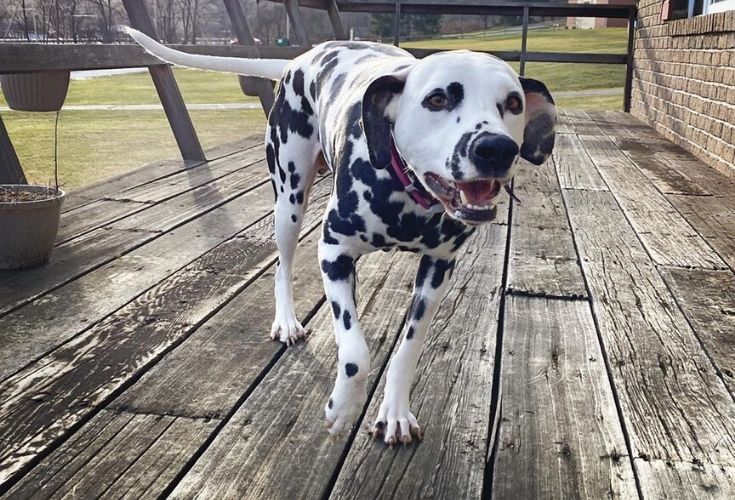
The Mid-1800s
While Dalmatians may have gotten their name from Dalmatia, a coastal province in Croatia, they didn’t appear there for certain until the middle of the 19th century.
At this point, their history revolved around the Romani people, which shows just how well-rounded these dogs are. Not only did these dogs travel alongside the horse-drawn wagons, but they also worked to control rats, herd, retrieve, and guard.
Modern Day
Still well-known for their powerful friendship with horses, many Dalmatians today are favorites among horse riders, even without the carriages and the need to protect against highwaymen.
The Dalmatian’s past as carriage dogs hasn’t been forgotten, though. Many owners of the breed take part in Coaching Trials to put their dogs’ endurance and loyalty to the truest test of their nature.
Dalmatians have also joined the Anheuser-Busch wagons since the 1950s. While they don’t trot alongside the Clydesdales pulling the beer wagons, you can still see them sitting with the driver in a place of honor.
The Many Uses of the Dalmatian
Considering their well-rounded abilities, it’s no surprise that the Dalmatian’s past has included a wide range of odd jobs. Along with their role as carriage dogs, they’ve also been used as hunters, draft animals, and even shepherds. They have a few better-known roles too.
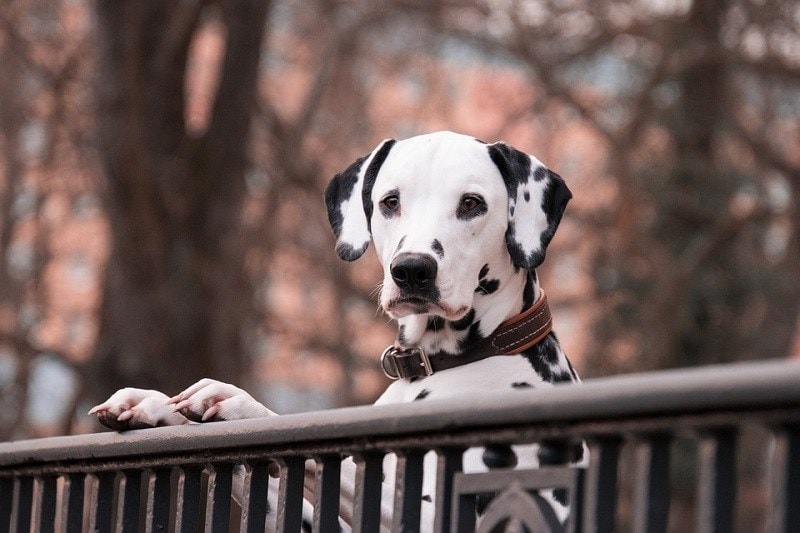
Firehouse Dogs
Probably one of the biggest roles that these dogs played was in fire stations. Long before the introduction of the fire engine, fire stations relied on horses to cart around the water that they needed to tackle fires. The presence of these horses and the speed at which these wagons were expected to traverse the city meant an early form of siren was needed.
This is where Dalmatians came in. Having already proven their worth as carriage dogs, both in keeping up with the horses and guarding them, firehouses used them as living sirens too. The loyal dogs would clear the way in busy streets and protect the horses from pedestrians and stray dogs. Keeping the horses calm when they were in the vicinity of the fire was also a job for these dogs.
These days, especially in the U.S.A., Dalmatians are still a common sight in many fire stations. They might not guard modern fire engines, but they’re more than happy to ride along, anyway.
The Circus
Perhaps a less well-known job for these dogs was their place on stage. With their distinctive appearance and willingness to clown around and amuse their owners, Dalmatians quickly found a place among performers. The circus in particular took a shine to the breed for their keen intelligence and ability to remember tricks.
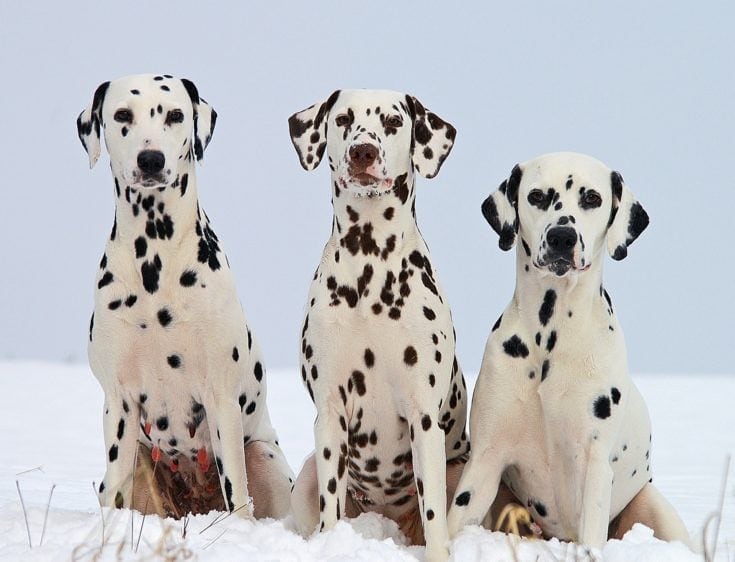
Messenger Dogs
Many animals had roles during World War I and World War II. Although there weren’t many carriages to race alongside, Dalmatians still found their role during both wars. Due to their impressive intelligence and endurance, Dalmatians were relied on to carry messages from place to place.
Movie Stars
Despite their unique role in history, Dalmatians didn’t truly endear themselves to the masses until the re-release of “101 Dalmatians” in 1985. As a refresher of the 1960s classic by Walt Disney, the 1985 release prompted a massive rise in the breed’s popularity.
This sudden popularity prompted many Dalmatian lovers to remind new owners to consider the high-energy levels of these dogs over the attractiveness of their coats.
A Mysterious Name
It’s possible that the Dalmatian’s noted past in Croatia might have given them their name, but with their uncertain history, it’s no real surprise their name’s origin is unsure too. Here are a few other stories as to how these dogs got their name.
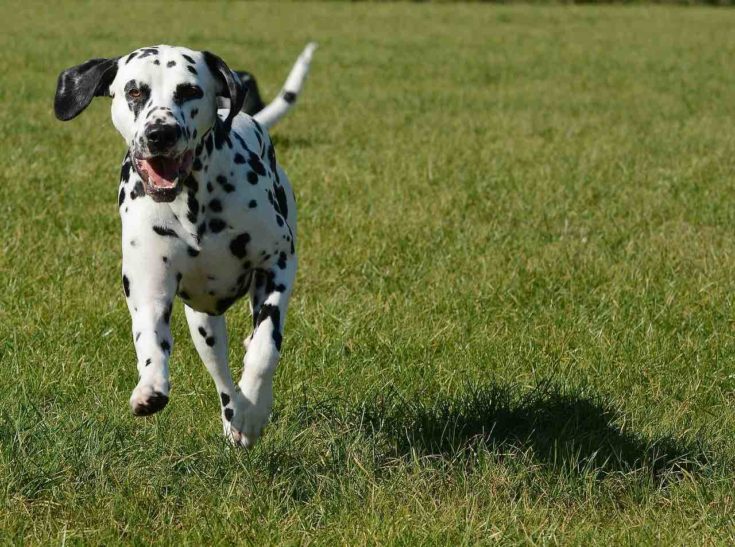
Deer Dog
With Dalmatians having such a widely varied background, their name is believed to be a time-worn variation of “Damachien.” One of their well-loved traits was as hunters, and “Dama” is the Latin word for “deer.” The “Chien” is French for “dog.”
While the Dalmatian’s role as deer hunter might not be as well known as their role as firehouse companion, the designation of “Deer Dog,” or “Damachien,” has a unique ring to it, one that matches the breed themselves.
Jurji Dalmatin
Gaining a name through correspondence with well-known artists is par for the course for many new breeds. The Serbian poet, Jurji Dalmatin, mentioned spotted dogs frequently in the letters he wrote during the 16th century.
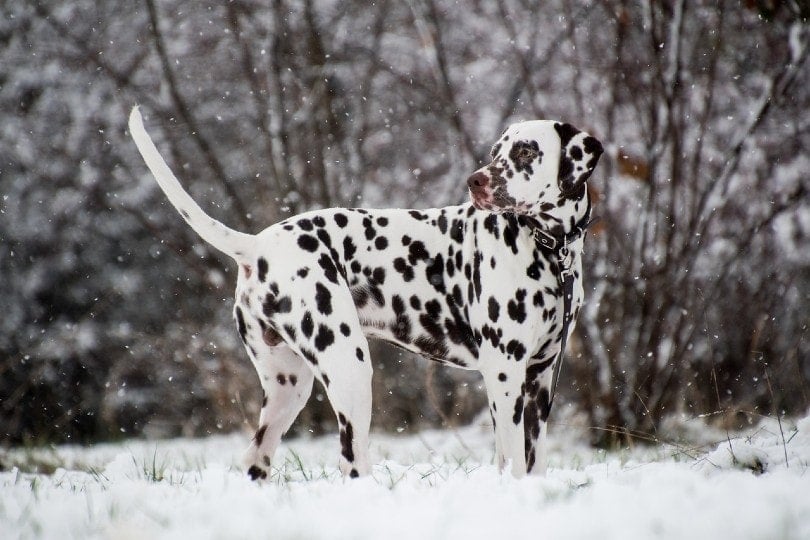
Andrea Bonaiuto
One possible source of the Dalmatian’s name from an artist could be the works of Andrea Bonaiuto. In the 14th century, Bonaiuto painted a scene with Dalmatians — or otherwise spotted dogs that shared their likeness — accompanying monks wearing dalmaticus fur.
Conclusion
Although they’re easy to recognize, the Dalmatian is one of the most enigmatic dog breeds around today. Well-rounded stars of the dog world, they’re attractive and good at everything, including befriending horses.
While not much is known about their past, Dalmatians have left a long legacy as members of the fire department. They might not run alongside fire engines today, but they’re still a common feature in many fire stations and have long since endeared themselves to all sorts of dog lovers.
See also:
- What Were Poodles Bred For? Origins, Roles & History
- What Were Goldendoodles Bred For? Breed History Explained
Featured Image Credit: TheOtherKev, Pixabay


